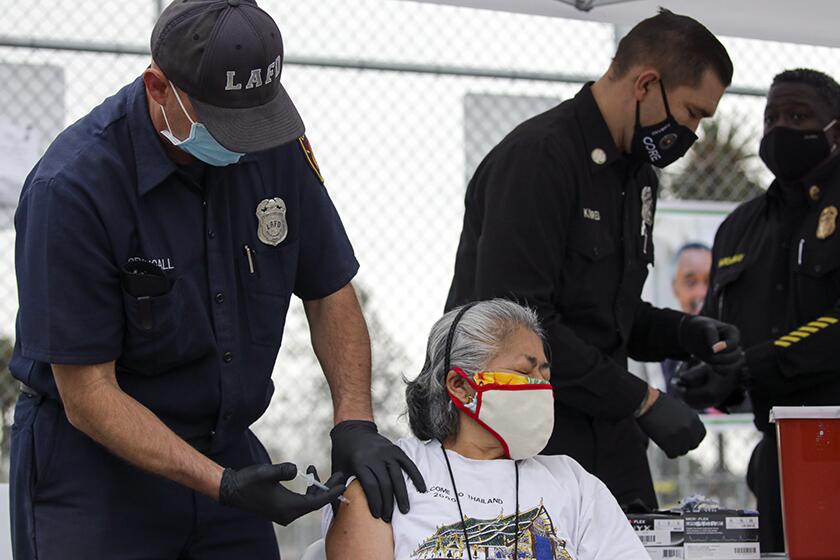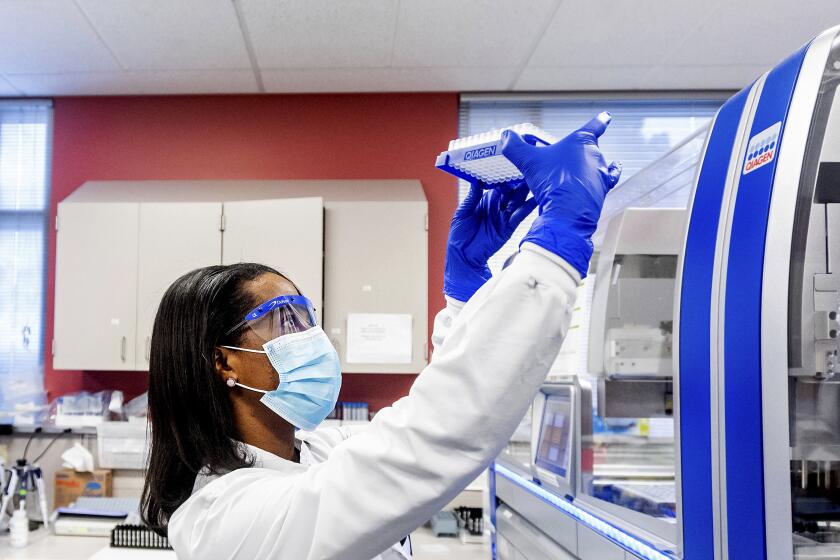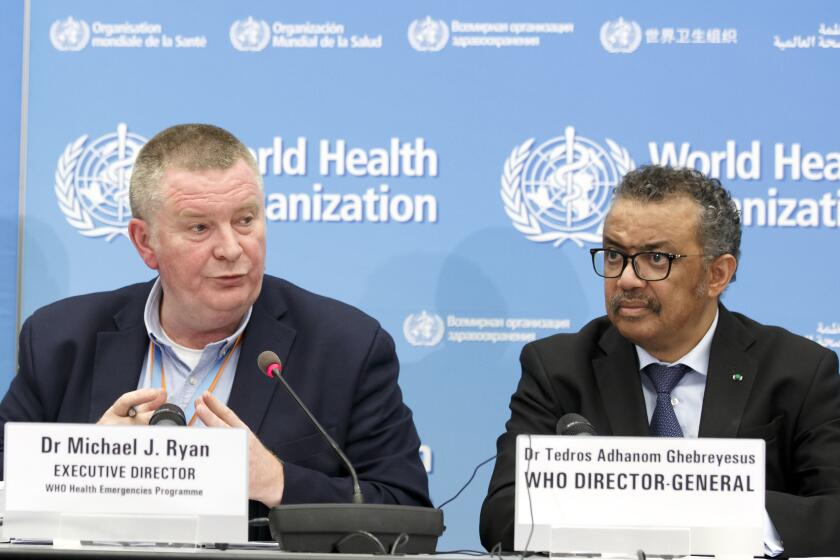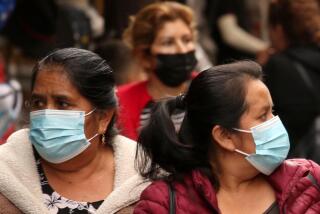Plunging demand for coronavirus tests may leave U.S. exposed
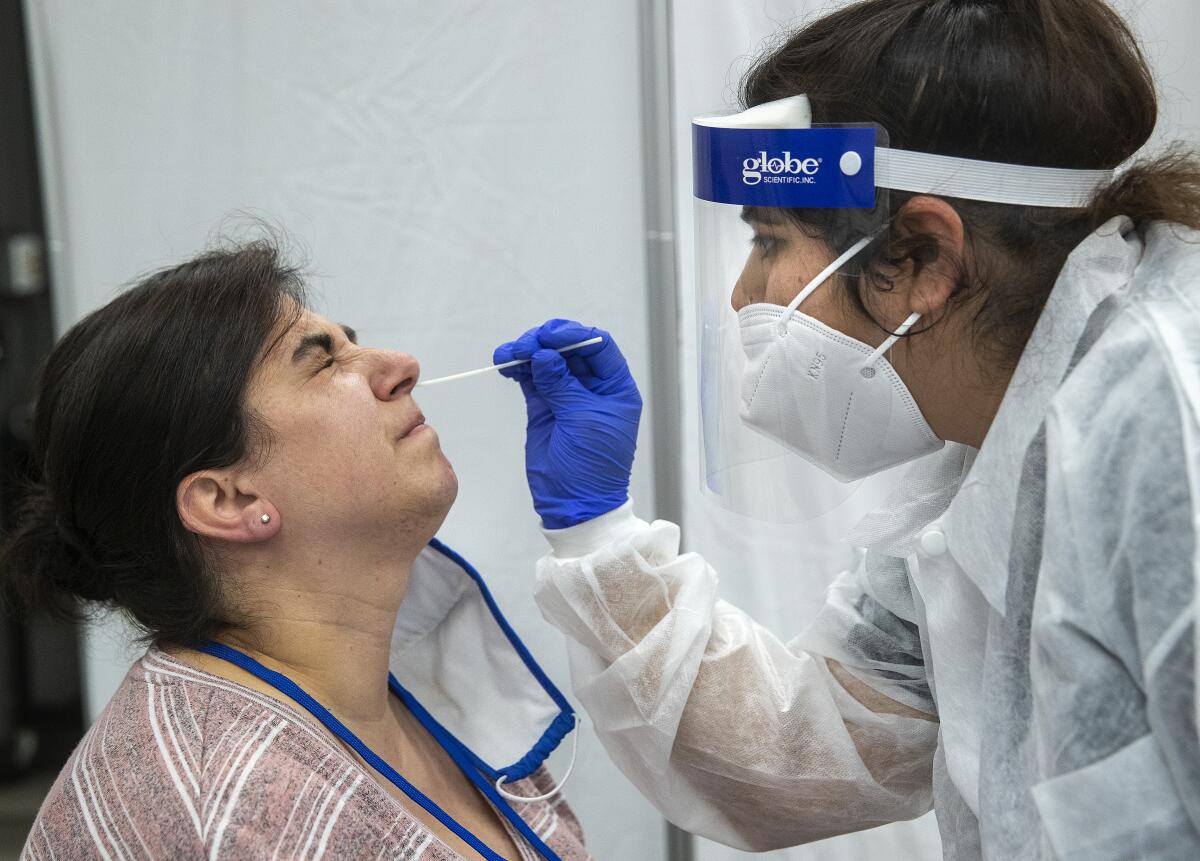
Just five weeks ago, Los Angeles County was conducting more than 350,000 weekly coronavirus tests as health workers raced to contain the worst COVID-19 hotspot in the United States.
Now testing has nearly collapsed, county officials say. More than 180 government-supported sites are operating at only a third of their capacity.
“It’s shocking how quickly we’ve gone from moving at 100 miles an hour to about 25,” said Dr. Clemens Hong, who leads the county’s testing operations.
After a year of struggling to boost testing, communities across the country are seeing plummeting demand, shuttering testing sites and even trying to return supplies.
The drop in screening comes at a significant moment in the outbreak: Experts are cautiously optimistic that COVID-19 is receding after killing more than 500,000 people in the U.S. But concerns remain that emerging variants could prolong the epidemic.
“Everyone is hopeful for rapid, widespread vaccinations, but I don’t think we’re at a point where we can drop our guard just yet,” Hong said. “We just don’t have enough people who are immune to rule out another surge.”
U.S. testing hit a peak Jan. 15, when the country was averaging more than 2 million tests per day. Since then, the average number of daily tests has fallen more than 28%. The drop mirrors declines across all major coronavirus measures since January, including new cases, hospitalizations and deaths.
In L.A., so many people now have immunity to the coronavirus from past infections and vaccination that transmission is slowing and inching toward herd immunity.
Officials say those encouraging trends, together with harsh winter weather, the end of the holiday travel season, pandemic fatigue and a growing focus on vaccinations, are sapping interest in testing.
“When you combine all those together you see this decrease,” said Dr. Richard Pescatore of the public health department in Delaware, where daily testing has fallen more than 40% since the January peak. “People just aren’t going to go out to testing sites.”
But testing remains important for tracking and containing the outbreak.
L.A. County is opening more testing options near public transportation, schools and offices to make it more convenient. And officials in Santa Clara County are urging residents to “continue getting tested regularly,” highlighting new mobile testing buses and pop-up sites.
President Biden has promised to revamp the nation’s testing system by investing billions in supplies and government coordination. But with demand falling fast, the country may soon have a glut of unused supplies. The U.S. will be able to conduct nearly 1 billion monthly tests by June, according to projections from researchers at Arizona State University. That’s more than 25 times the current rate of about 40 million tests reported per month.
With more than 150 million new vaccine doses due for delivery by late March, testing is likely to fall further as local governments shift staff and resources to giving shots.
“You have to pick your battles here,” said Dr. Jeffrey Engel of the Council of State and Territorial Epidemiologists. “Everyone would agree that if you have one public health nurse, you’re going to use that person for vaccination, not testing.”
Some experts say the country must double down on testing to avoid flare-ups from coronavirus variants that have taken hold in the U.K., South Africa and elsewhere.
“We need to use testing to continue the downward trend,” said Dr. Jonathan Quick of the Rockefeller Foundation, which has been advising Biden officials. “We need to have it there to catch surges from the variants.”
The Biden administration is boosting efforts to identify and track coronavirus variants to help scientists see where the pandemic is heading next.
Last week, Minnesota began urging families to get tested every two weeks through the end of the school year as more students return to the classroom.
“To protect this progress, we need to use all the tools at our disposal,” said Dan Huff, an assistant commissioner for the state’s health department.
But some of the most vocal testing proponents are less worried about the declines in screening. From a public health viewpoint, testing is effective if it helps to quickly find the infected, trace their contacts and isolate them to stop the spread. In most parts of the U.S., that never happened.
Over the holiday season, many Americans had to wait days to receive test results, rendering them largely useless. That led to testing fatigue and dwindling interest, said Dr. Michael Mina of the Harvard T.H. Chan School of Public Health.
“It doesn’t exactly give you a lot of gratifying, immediate feedback,” Mina said. “So people’s willingness or interest in getting tested starts to go down.”
The World Health Organization’s emergencies chief says it’s ‘premature’ and ‘unrealistic’ to think that the pandemic might be over by year’s end.
Still, U.S. test manufacturers continue to ramp up production, with another 110 million rapid and home-based tests expected to hit the market next month.
Government officials long assumed that this growing arsenal of cheap, 15-minute tests would be used to regularly screen millions of students and teachers as in-person classes resume. But recent guidelines from the Centers for Disease Control and Prevention don’t emphasize testing, describing it as an “additional layer” of protection, behind basic measures like masking and social distancing.
Even without strong federal backing, testing programs will be important for marshaling the public confidence needed to fully reopen schools, education leaders say, including in the fall, when cases are expected to rise again.
“Schools have asked themselves, justifiably, ‘Is the juice worth the squeeze to set up a big testing effort?’” said Mike Magee, chief executive of Chiefs for Change, a nonprofit that advises districts in more than 25 states. “Our message to the school systems we work with is: ‘Yes, you need to stand up comprehensive testing, because you’re going to need it.’”
